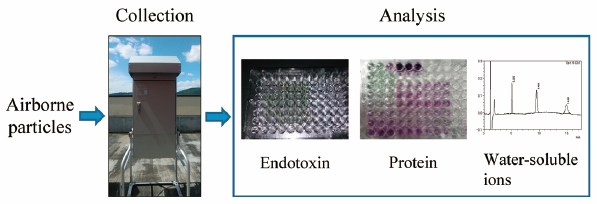- J-STAGE home
- /
- Biological and Pharmaceutical ...
- /
- Volume 41 (2018) Issue 1
- /
- Article overview
-
Mohammad Shahriar Khan
Department of Public Health, Kyoto Pharmaceutical University
-
Souleymane Coulibaly
Department of Public Health, Kyoto Pharmaceutical University
-
Maho Abe
Department of Public Health, Kyoto Pharmaceutical University
-
Nami Furukawa
Department of Public Health, Kyoto Pharmaceutical University
-
Yuuki Kubo
Department of Public Health, Kyoto Pharmaceutical University
-
Yusuke Nakaoji
Department of Public Health, Kyoto Pharmaceutical University
-
Yumi Kawase
Department of Public Health, Kyoto Pharmaceutical University
-
Takahiro Matsumoto
Department of Public Health, Kyoto Pharmaceutical University
-
Tomohiro Hasei
Department of Public Health, Kyoto Pharmaceutical University
-
Yuya Deguchi
Faculty of Pharmaceutical Sciences, Nagasaki International University
-
Hiroaki Nagaoka
Faculty of Pharmaceutical Sciences, Nagasaki International University
-
Nobuyuki Yamagishi
Faculty of Pharmaceutical Sciences, Setsunan University
-
Masanari Watanabe
Department of Respiratory Medicine and Rheumatology, Tottori University Faculty of Medicine
-
Naoko Honda
Department of Public Health, Kyoto Pharmaceutical University Department of Food and Nutrition, Faculty of Human Health, Sonoda Women’s University
-
Keiji Wakabayashi
Department of Public Health, Kyoto Pharmaceutical University Graduate Division of Nutritional and Environmental Sciences, University of Shizuoka
-
Tetsushi Watanabe
Corresponding author
Department of Public Health, Kyoto Pharmaceutical University
2018 Volume 41 Issue 1 Pages 115-122
- Published: January 01, 2018 Received: September 15, 2017 Released on J-STAGE: January 01, 2018 Accepted: October 20, 2017 Advance online publication: - Revised: -
(compatible with EndNote, Reference Manager, ProCite, RefWorks)
(compatible with BibDesk, LaTeX)


